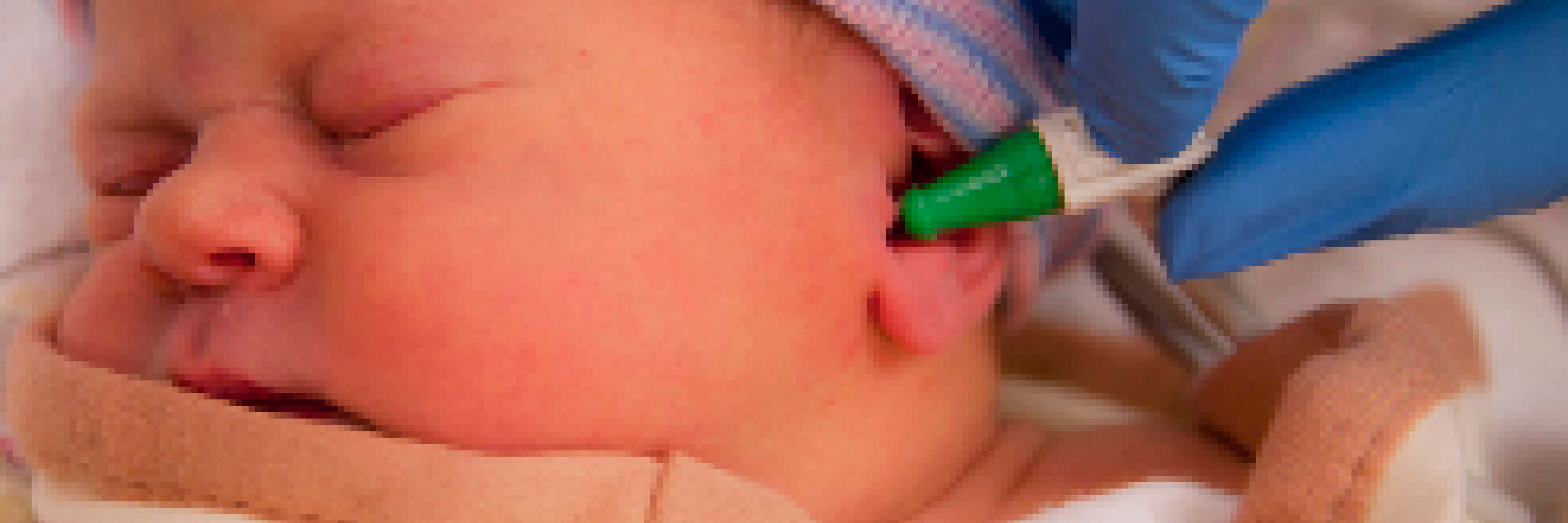Early Hearing Detection and Intervention (EHDI)
Related Programs
Contact Info
Early Hearing Detection and Intervention
Out of Hospital Births: At Birth

Role of out of hospital birth providers in EHDI
Important Steps to Cover
- Educate parents about newborn hearing screening.
- Schedule infants for screening with another provider if unable to provide hearing screening at your site (Midwives Offering Newborn Hearing Screening, Specialist Resources: Diagnostic Audiology Centers).
- Prepare quiet infant for testing and screen both ears by 3 days postpartum.
- Rescreen by 2 weeks postpartum if initial results is a REFER (REFER=did not pass).
- Document results in baby's medical record.
- Report results to the parent, primary care provider, and MDH Newborn Screening Program.
- Schedule appointment for diagnostic audiology evaluation as soon as possible for infants who did not pass their rescreen.
- Have a plan for missed screens and equipment breakdown.
Featured
Training Curriculum
Newborn Hearing Screening Training Curriculum | NCHAM (infanthearing.org)
- See Module 3 for Otoacoustic Emissions (OAE)
- See Module 4 for Automated Auditory Brainstem Response (A-ABR)
- As of April 1, 2025 the fee for the initial training course is $50.00 per person, and the recertification/refresher course for returning users is $25.00. A discounted bundle purchase option is available.
Out of hospital birth provider resources
- Newborn Hearing Screening Information for Primary Care Providers
- Out of Hospital Birth Newborn Hearing Screening Brochure (PDF)
- Hearing Screener Competency Checklist (PDF)
- OAE Screening Tips (PDF)
- Hearing Screening and Pulse Oximetry (CCHD) Result Report Form (PDF)
- Notification of Newborn Hearing Screening Appointment - for midwives (PDF)
Educational resources for families are available to order in multiple languages on the MDH Newborn Screening Store.
Below are some common misconceptions about hearing loss and newborn hearing screening that out of hospital birth providers might encounter. For additional information, please see Myths vs. Clinical Facts of Newborn Hearing Screening and Early Diagnosis (PDF).
Misconception: Hearing loss does not occur very often, so newborn hearing screening is not necessary.
Clinical Fact: Hearing loss affects about 1-3 per 1000 births, and is considered to be one of the most common congenital findings.
Misconception: Parents can test a child's hearing by clapping their hands or banging pots near the child.
Clinical Fact: Some babies with hearing loss can still startle to loud noises or respond to some sounds, but may not be able to hear all the sounds important for speech. Thorough hearing testing is needed to find all types/levels of hearing loss that can affect speech/language development.
Misconception: There is no rush to identify hearing loss.
Clinical Fact: Children identified with hearing loss after 6 months of age are more likely to have speech and language delays. Children identified before this time, can avoid these delays through evidence-based early intervention.